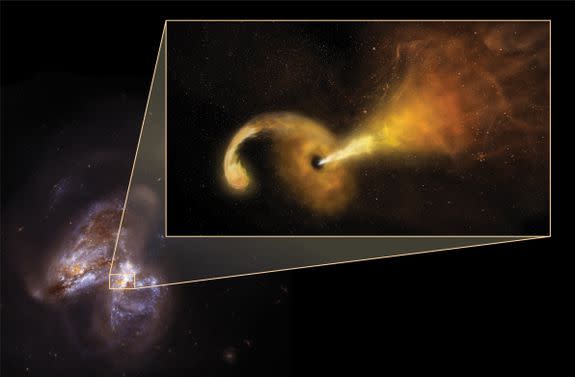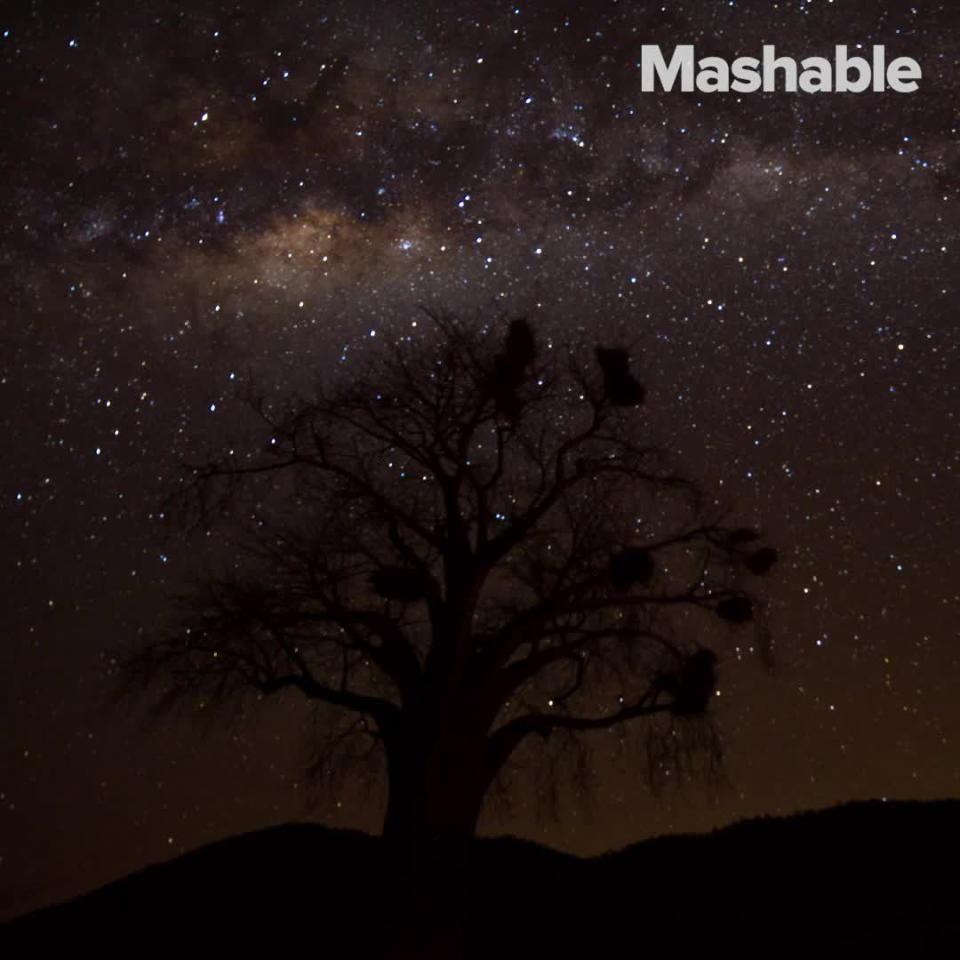Black hole eats and destroys hapless star which wandered too close

Beware of the hungry black hole.
Astronomers tracked a supermassive black hole, 20 million times larger than the sun, which ate up and destroyed a star that came too close.
SEE ALSO: Three baby planets hanging around a star discovered by astronomers
Located nearly 150 million light years away from Earth, scientists theorise the star swirled around the black hole, emitting intense x-rays and visible light, as a jet of material spat out at a quarter of the speed of light.
Such an occurrence, called a tidal disruption event (TDE), has been rarely spotted. But scientists think they happen more often.
In the case of this stellar death, astronomers used radio and infrared telescopes, such as New Mexico's Very Long Baseline Array (VLBA), to keep an eye on the event which happened in a pair of colliding galaxies called Arp 299.
"Never before have we been able to directly observe the formation and evolution of a jet from one of these events," Miguel Perez-Torres, from the Astrophysical Institute of Andalusia and who published a report in the journal Science, said in a statement online.

Image: Sophia Dagnello, NRAO/AUI/NSF; NASA, STScI
Perez-Torrez and Seppo Mattila, of the University of Turku in Finland, got their first indication something was going on in January 2005.
Astronomers noticed a bright burst near Arp 299, and kept track of the occurrence over a decade, which revealed a jet of electromagnetic waves going in one direction from the black hole.
A black hole is an area of space which has such strong gravitational pull that nothing can escape from it, including light. Although most galaxies have black holes, they're not necessarily out there actively eating everything up.
Mattila said the discovery might just be the "tip of the iceberg" for TDEs, with the potential for more discoveries ahead.
"By looking for these events with infrared and radio telescopes, we may be able to discover many more, and learn from them," he added.
WATCH: These trees have lived for 2,500 years. Now they're suddenly dying


